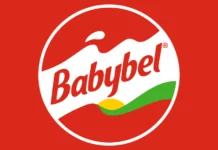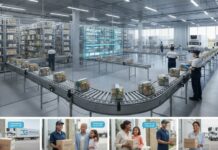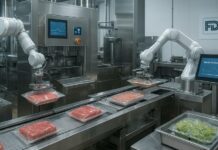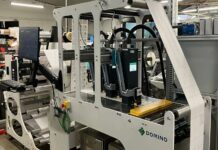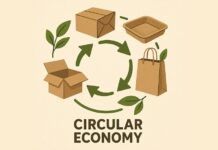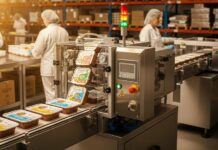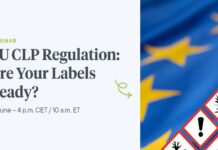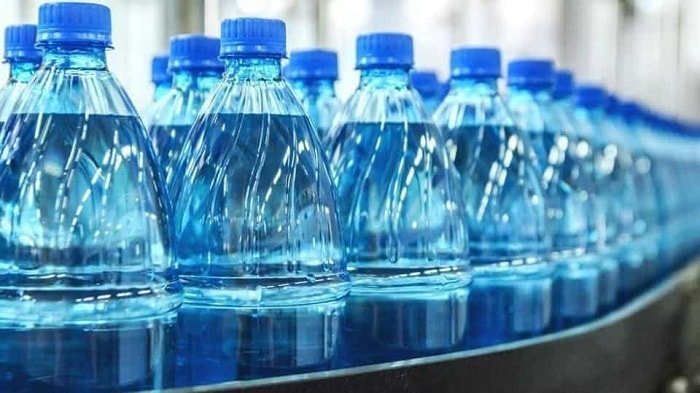Energy efficiency optimization remains crucial for large energy consumers. With volatile energy prices, businesses seek solutions to cut costs, reduce overheads, and stay competitive. The packaging industry is no different.
Large energy users face scrutiny from regulators, government bodies, customers, and shareholders. Since mandatory climate-related financial disclosures were introduced for over 1,300 major UK-registered businesses nearly two years ago, aligned with the UK’s goal of reaching net zero by 2050, decarbonization strategies have become a focal point. This disclosure regime has been endorsed by 60% of global businesses, shaping the decarbonization strategies of some of the UK’s largest companies.
The packaging industry encompasses many energy-intensive sectors, including pulp and paper, plastics, metals, and glass production. It is a significant employer and economic contributor. According to The Packaging Federation, the sector’s annual sales exceed £14 billion, employing 85,000 people across various roles, representing 3% of the UK’s manufacturing workforce. Further growth is anticipated.
Decarbonization in this industry involves significant complexity. Innovate UK notes that the environmental impact of packaging depends on factors such as material choices, supply chains, recycling, and refillable containers. However, consumer behavior also plays a role, requiring sustainable purchasing choices and recycling practices.
Technological advances in manufacturing, such as hydrogen-powered or electric arc furnaces, are reducing the carbon footprint of energy-intensive processes. For example, ArcelorMittal in Spain, a customer of Shell Energy, invested €67m in an electric furnace for steelmaking. Encirc plans to develop a low-carbon hydrogen-powered glass furnace in Cheshire, UK. Different industries, including glass, plastics, paper, and metal, are pursuing varied routes to decarbonization.
The Food & Drink Federation recently urged its members to explore flexibility to manage energy costs, as many businesses have reached the limit of passing on inflationary pressures, having found energy efficiencies and cut other costs. It encouraged participation in the Demand Flexibility Service (DFS) to earn money by shifting electricity usage outside peak hours, helping the Electricity System Operator (ESO) manage supply during tight periods.
The International Energy Agency (IEA) identified paper production as a high heat and water demand sector, making it one of the top five energy-intensive industries globally. Paper production accounts for approximately 6% of global industrial energy use and 2% of direct industrial CO2 emissions. Innovations to reduce water evaporation, enhance waste heat recovery, and use heat pumps to reuse latent heat can improve energy efficiency and lower emissions.
Cepac, a leading independent corrugated packaging manufacturer in the UK, operates four production facilities around the clock and is committed to minimizing its environmental impact. Working with Shell Energy, Cepac aims to achieve decarbonization goals by procuring renewable electricity and adopting new technologies. Cepac’s commitment to sustainability includes using recycled paper for 90% of its boxes, installing solar panels, and investing in electric vehicles and LED lights.
British Glass, representing the glass manufacturing sector, is developing a strategy to reach net-zero emissions by 2050. This includes increasing furnace energy efficiency by 50%, maximizing recycled content in glass packaging, and investing in waste heat recovery. The Glass Futures Global Centre of Excellence in St Helens will feature experimental technology to investigate carbon-neutral glass production, potentially aiding other energy-intensive industries.
Steel packaging, used for over 1,500 food and drink items and various household products, has a high recycling rate but remains energy and carbon-intensive to process. The IEA predicts that iron and steel will continue using coal until 2050 due to its role as a reducing agent. However, carbon capture and hydrogen-based production technologies are being explored for large-scale development.
Considerable progress has been made in reducing emissions, such as deploying low-emission heating technologies and energy efficiency measures. For instance, SSAB’s steel plant in Oxelosund has significantly cut CO2 emissions using heat pump technology. However, the IEA stresses that efforts must accelerate to align with the Net Zero Emissions by 2050 (NZE) Scenario, which requires a 6% annual decline in emissions to 2030, compared to a 1.6% average decline over the past decade.
The packaging industry, being vast and varied, faces unique challenges in the journey towards decarbonization. The industry is under constant scrutiny from regulators, government bodies, shareholders, and customers, emphasizing the need for transparency and accountability in its environmental impact. The mandatory disclosure of climate-related financial information for major UK-registered businesses is a significant step in this direction, aiding the UK’s goal of net-zero emissions by 2050.
Innovate UK has pointed out that decarbonizing packaging involves several factors, from the choice of materials to the entire supply chain, including recycling and the use of refillable containers. Consumer behavior also plays a crucial role, necessitating a shift towards sustainable purchasing decisions and best recycling practices. Technological advancements are pivotal in mitigating the carbon footprint of energy-intensive processes. Hydrogen-powered and electric arc furnaces exemplify such progress, with companies like ArcelorMittal and Encirc leading the way with substantial investments in these technologies.
The Food & Drink Federation’s call for flexibility in managing energy costs is particularly relevant in the current economic climate. With businesses reaching the limit of passing on inflationary pressures and finding energy efficiencies where possible, initiatives like the Demand Flexibility Service (DFS) offer a viable solution. By shifting electricity usage outside peak hours, companies can earn money and help manage the supply-demand balance during tight periods.
Paper production is another sector under the spotlight, identified by the International Energy Agency as one of the top five energy-intensive industries globally. Innovations to reduce water evaporation, improve waste heat recovery, and use heat pumps to reuse latent heat are some of the strategies being explored to enhance energy efficiency and reduce emissions in this sector.
Cepac, a leading corrugated packaging manufacturer in the UK, exemplifies the industry’s commitment to sustainability. By partnering with Shell Energy, Cepac is working towards its decarbonization goals, which include procuring renewable electricity and adopting new technologies. The company’s efforts to minimize its environmental impact include using recycled paper, installing solar panels, and investing in electric vehicles and LED lights.
British Glass is also making significant strides in its decarbonization journey, with a strategy aimed at achieving net-zero emissions by 2050. The organization’s focus on increasing furnace energy efficiency, maximizing recycled content, and investing in waste heat recovery demonstrates a comprehensive approach to reducing its carbon footprint. The establishment of the Glass Futures Global Centre of Excellence further underscores the industry’s commitment to exploring innovative solutions for carbon-neutral glass production.
Steel packaging, despite its high recycling rate, remains a challenging sector due to its energy and carbon-intensive processing requirements. The International Energy Agency’s prediction that iron and steel will continue using coal until 2050 highlights the need for alternative solutions. Technologies such as carbon capture and hydrogen-based production are being explored to address this challenge, with the aim of developing scalable solutions in the long term.
Significant progress has been made in reducing emissions across the packaging industry with the deployment of low-emission heating technologies and energy efficiency measures. SSAB’s steel plant in Oxelosund is a notable example, having significantly reduced its CO2 emissions through the use of heat pump technology. However, the International Energy Agency emphasizes that efforts must accelerate to meet the Net Zero Emissions by 2050 (NZE) Scenario. This requires a 6% annual decline in emissions until 2030, compared to the 1.6% average decline observed over the past decade.
The packaging industry, with its diverse and complex challenges, is making notable strides towards decarbonization. Through a combination of technological innovation, regulatory compliance, and a commitment to sustainability, the industry is paving the way for a greener future.




